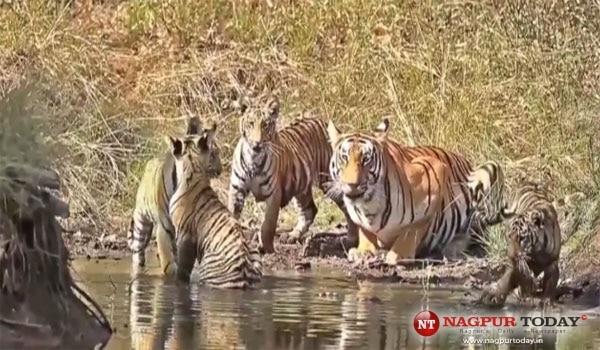Nagpur: THE ‘machan census’ in Vidarbha received tremendous response from wildlife and nature-lovers after a gap of two years due to the pandemic on Monday. Nature-lovers sighted the highest 44 tigers in Tadoba Andhari Tiger Reserve (TATR) in one single night during this activity, which takes place every year on Buddha Pournima night.
The last ‘machan census’ was held on May 19 in 2019. It was not held thereafter due to the Covid-19 pandemic. TATR management erected 98 machans at different locations of the tiger reserve. Two persons with one forest guard were there on a ‘machan’ for this activity. The participants counted a total 44 tigers in which 23 were in the core area and 21 were in the buffer of TATR. In the 2019 exercise, volunteers had reported direct sighting of 36 tigers and an equal number of leopards in the buffer zone of TATR. Similarly, participants counted 11 leopards — 4 in core area and 7 in buffer.
There were total 4,918 wild animals sighted during the ‘machan census’ in TATR and most of them included spotted deer (1,209), wild boars (1,269), sambars (942), Indian gaurs (325), and wild dogs (36) among other animals. As per the data, more animal density was recorded in the core as compared to the buffer area.
In Pench Tiger Reserve (PTR), the participants sighted a variety of wildlife during the ‘machan census’. Umred-Pauni-Karhandla Wildlife Sanctuary, which is about 50 km from Nagpur, and BorTiger Reserve, which is also close to the city, received overwhelming response from wildlife lovers for ‘machan census’. After a gap of two years, the activity took place in Kuhi, Pauni, Umred, Bor and New Bor Wildlife Range.
Total 96 machans, including Gothangaon (20 machans), Paoni (16), Karhandla (20) and Bordharan (40) were erected, in which, all were full. The machan census method of estimation was withdrawn by the National Tiger Conservation Authority (NTCA) in 2008 as it was considered unscientific. It has been renamed as ‘Nisarga Anubhav’ and will help the park authorities know prey-predator density. It will also help educate and sensitise people.















